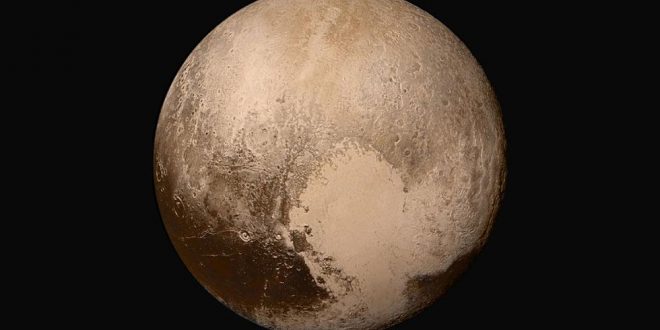Even after officially demoting it to a dwarf planet, scientists still aren’t quite sure what to make of Pluto. A recently published study makes categorizing the former planet even more difficult.
In a research published in the Journal of Geophysical Research last week, space physicists revealed that Pluto behaves less like a comet and more like a planet based on the way it interacts with solar wind.
Using data from the Solar Wind Around Pluto (SWAP) instrument from the New Horizons July 2015 flyby, scientists have for the first time observed the material coming off of Pluto’s atmosphere and studied how it interacts with the solar wind, leading to yet another “Pluto surprise.”
“This is a type of interaction we’ve never seen before anywhere in our solar system,” said David J. McComas, lead author of the study. McComas, professor of astrophysical sciences at Princeton University and vice president for the Princeton Plasma Physics Laboratory. “The results are astonishing.” McComas leads the SWAP instrument aboard New Horizons; he also led the development of SWAP when he was at the Southwest Research Institute (SwRI) in San Antonio, Texas.
Space physicists say that they now have a treasure trove of information about how Pluto’s atmosphere interacts with the solar wind. Solar wind is the plasma that spews from the sun into the solar system at a supersonic 100 million miles per hour (160 million kilometers per hour), bathing planets, asteroids, comets and interplanetary space in a soup of mostly protons and electrons.
Previously, most researchers thought that Pluto was characterized more like a comet, which has a large region of gentle slowing of the solar wind, as opposed to the abrupt diversion solar wind encounters at a planet like Mars or Venus. Instead, like a car that’s part gas- and part battery-powered, Pluto is a hybrid, researchers say.
So Pluto continues to confound. “These results speak to the power of exploration. Once again we’ve gone to a new kind of place and found ourselves discovering entirely new kinds of expressions in nature,” said SwRI’s Alan Stern, New Horizons principal investigator.
Since it’s so far from the sun – an average of about 3.7 billion miles, the farthest planet in the solar system – and because it’s the smallest, scientists thought Pluto’s gravity would not be strong enough to hold heavy ions in its extended atmosphere. But, “Pluto’s gravity clearly is enough to keep material relatively confined,” McComas said.
The researchers were able to separate the heavy ions of methane, the main gas escaping from Pluto’s atmosphere, from the light ions of hydrogen that come from the sun using the SWAP instrument.
Agencies/Canadajournal

 Canada Journal – News of the World Articles and videos to bring you the biggest Canadian news stories from across the country every day
Canada Journal – News of the World Articles and videos to bring you the biggest Canadian news stories from across the country every day

